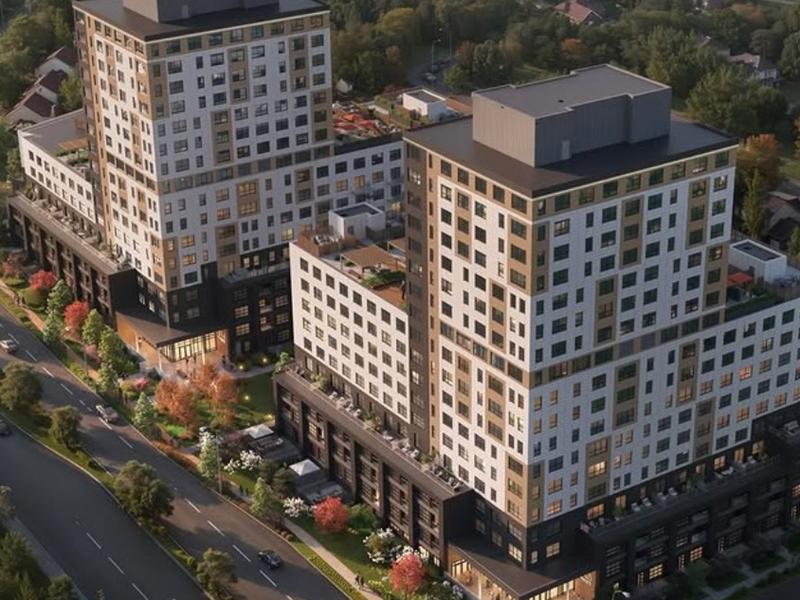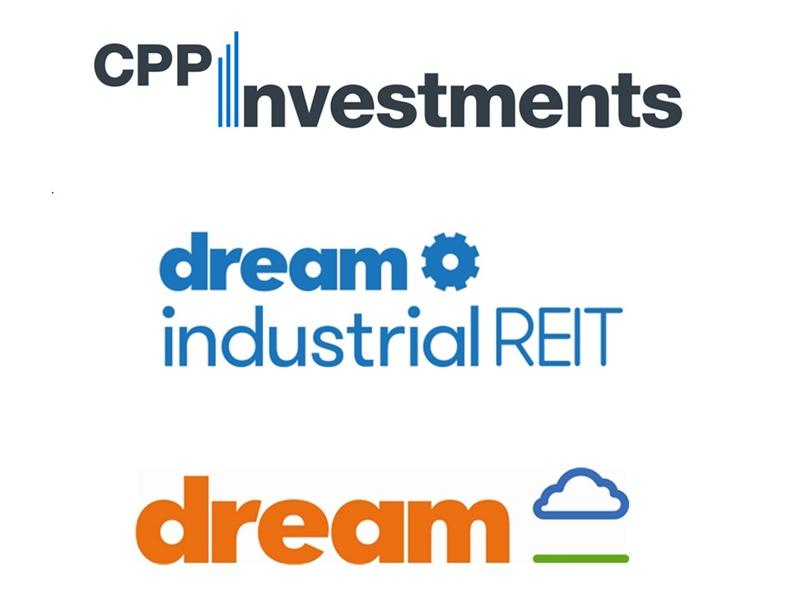
Graphic overview of the Crosspointe Industrial Park in Balzac, just outside Calgary. (Courtesy JLL / Hopewell)
Calgary’s industrial market continues to be resilient in the face of a struggling economy which has hit hard in other sectors of the city’s commercial real estate industry, particularly office space.
Calgary’s downtown office market remains a sore spot with an elevated vacancy rate of about 25 per cent. That’s the headline-grabber for media, but it has overshadowed the “good news” coming out of the industrial real estate market.
According to commercial real estate firm CBRE, the fourth quarter of 2018 was Calgary’s eighth consecutive quarter of positive net absorption — the change in occupied space. Also, the fourth quarter witnessed the greatest amount of new supply delivered in a single quarter since Q4 2015.
“The Calgary industrial market is increasingly seen as a regional distribution hub. The regional Western Canadian marketplace is benefiting from sustained population growth and economic growth,” said Michael Hungerford, partner with Vancouver-based Hungerford Properties, which has significant industrial property in Calgary.
“In Calgary, there is supply of land, experienced developers, and quality infrastructure to support this growth. Moreover, the relative cost of living and available workforce is a compelling reason to locate in Calgary, rather than other regional cities.”
Absorption, new supply both increase
According to CBRE, absorption in the fourth quarter of 2018 was 455,941 square feet and for the year it was 3.1 million square feet – the most robust year since the historical high of 3.5 million square feet in 2012.
New supply totalled 2.1 million square feet in the fourth quarter of 2018 — the highest since the record 3.1 million square feet in the fourth quarter of 2015.
Hopewell Development is another company which is very active in the Calgary-area market.
Patricia Cayen, director of industrial leasing for Hopewell, said the company is constructing a 500,000-square-foot building in southeast Calgary in the Great Plains Business Park and another 525,000-square-foot building in Balzac at Crosspointe Industrial Park, just north of Calgary city limits. Both are expected to be completed by April or May.
She said Hopewell recently completed two other buildings in southeast Calgary, of 120,000 square feet and 157,000 square feet, respectively.
“The Balzac market right now, there’s the advantage of a lower property tax and no business tax. So you’ve got the large-bay tenant looking to that market,” Cayen said. “Amazon’s there. Smucker’s.
“There’s two Walmart facilities. A lot of those larger-bay tenants are looking because when you’re 300,000 square feet and you’re looking at about a buck a square foot potentially over a 10-year period that’s $3 million in savings.
“So it makes sense for tenants now to be looking to that market.”
Balzac leads Calgary-area market
She said Hopewell last year acquired another industrial park in the Balzac area which will be developed in the future. That could include development of up to four million square feet.
“There’s a number of reasons why Balzac is very successful right now. One is the availability of land. Two is the price of land. Three is operating-cost differential. And four, it’s now becoming a mature market,” said Ryan Haney, executive vice-president, specializing in industrial leasing with JLL. “There’s now amenities in Balzac. There’s roads. The road systems are strong in Balzac.
“The availability and sale price of land allows the larger players to be able to control their own destiny. The Walmarts of the world. The Sobeys of the world. The Gordon Food Services of the world. They’re able to acquire land if they want to. There’s a mass amount of developments starting to go out there.
“So you’re seeing more plays and more people move out there.”
CBRE said an estimated 7.9 million square feet of industrial product is planned or expected to be under construction in the next few years depending on market conditions.
The vacancy rate in the region currently sits in the 5.5 per cent to 6.5 per cent range, according to real estate experts.
Iain Ferguson, executive vice-president, specializing in industrial real estate, with CBRE in Calgary, said the bulk of demand for industrial space in Calgary is two or three times removed from the energy sector.
He said the quarterly trend of net positive absorption for the market “is largely a result of increased activity from larger-format distribution tenants.”
Large transactions during 2018
Ferguson added that in 2018 there were more than 10 deals larger than 100,000 square feet and six larger than 250,000 square feet.
“Growth in e-commerce sales, availability and affordability of land, easy access to Western Canadian markets and inflated pricing in other Canadian markets have all helped drive demand for warehouse space in Calgary,” said Ferguson.
“While this all speaks to the good news in our market – large-format demand – and while our market is statistically in a healthy range, this doesn’t speak to the continued challenges faced by some aspects of our market. Small/mid-format activity – up to 30,000 square feet or so – remains limited, which is more of a direct reflection of our local economy and disposable income for the average Calgarian. It’s a tale of two markets.”
Marshall Toner, executive vice-president, specializing in the industrial real estate market, with JLL in Calgary, said the Calgary market has become more diversified with a shift away from being oil- and gas-centric to being more distribution-centric over the last number of years.
“In the Balzac area for this year, you’re going to see continued growth from both occupiers, owner-users and developers,” said Toner.
Jon Mook, executive vice-president, specializing in the industrial real estate market, with Barclay Street Real Estate in Calgary, concurred a growing part of the region’s inventory has been driven by the distribution market.
Western “distribution hub”
“Whether that’s Amazon setting up a new facility here or companies like Canadian Tire and Walmart who continue to increase their footprint, Calgary continues to grow as a distribution hub in the West and that’s been even further amplified as the cost to have a warehouse in Vancouver has exponentially increased,” said Mook.
“A lot of companies need to be trucking to Calgary versus having more space in Vancouver. Either they can’t afford it or can’t find it.”
The Calgary vacancy rate peaked in January 2017 at 7.9 per cent, he said.
“As the market started to see signs of improvement and interest rates until recently were relatively low, there were still a lot of companies that wanted to own. The owner-user market has been very strong. The industrial condo or strata market has been very strong and that’s a lot of local companies that want to own their real estate,” added Mook.
“We’re absorbing as much as we’re building for the most part. We think that will likely continue.
“We don’t think vacancy will drop a lot because of the new construction underway. If anything, it might go up a bit, but we think it will hover between five and six per cent throughout the year. We don’t think anything dramatic will happen.”







